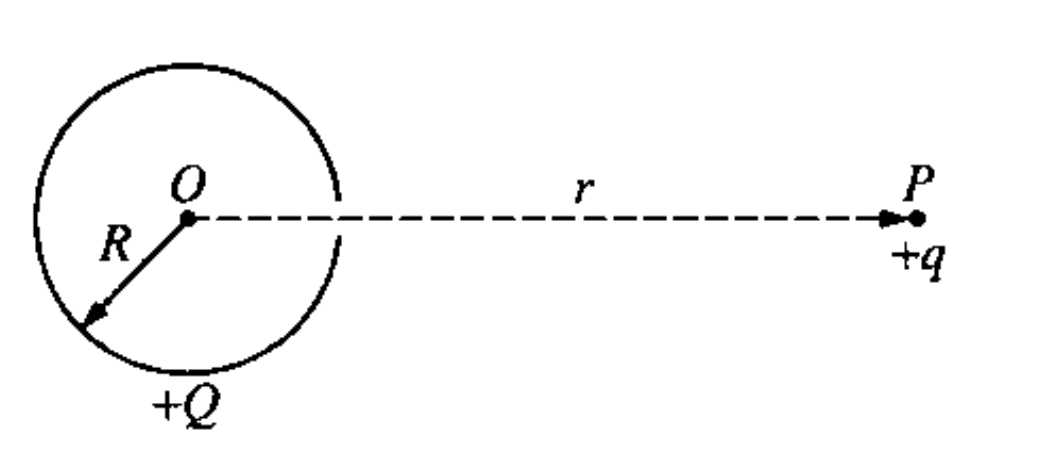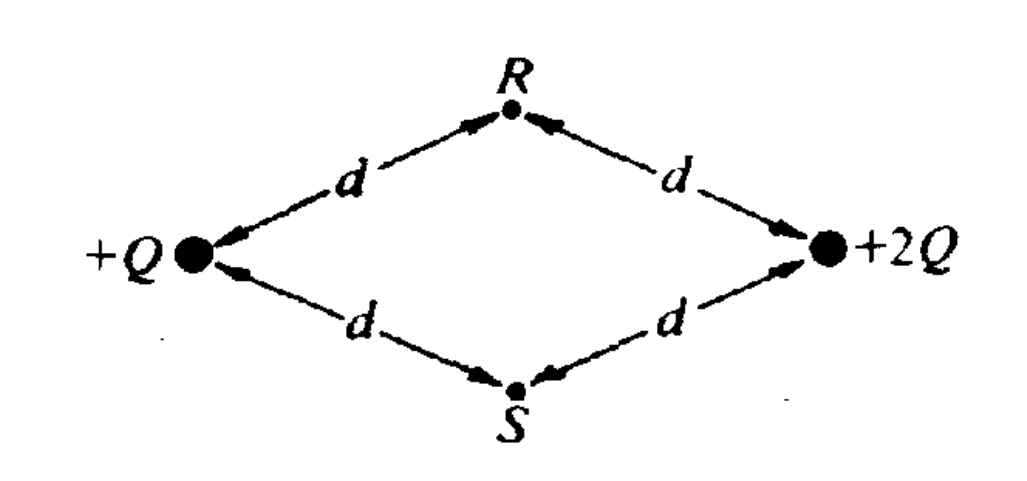Question

The nonconducting hollow sphere of radius R shown above carries a large charge +Q, which is uniformly distributed on its surface. There is a small hole in the sphere. A small charge +q is initially located at point P. a distance r from the center of the sphere. If k = 1/4πεo, what is the work that must be done by an external agent in moving the charge +q from P through the hole to the center O of the sphere?
(A) kqQ/r (B) kqQ/R (C) kq(Q – q)/r (D) kqQ(1/R – 1/r)
▶️Answer/Explanation
Ans:D
Solution: Inside the sphere, E = 0 which means the potential does not change with position and is the same value as the surface, which is kQ/R. At point P, the potential is kQ/r. W = qΔV = q(kQ/R – kQ/r)
Question
A positive charge of 3.0 × 10–8 coulomb is placed in an upward directed uniform electric field of 4.0 × 104 N/C. When the charge is moved 0.5 meter upward, the work done by the electric force on the charge is
(A) 6 × 10–4 J (B) 12 × 10–4 J (C) 2 × 104 J (D) 8 × 104 J
▶️Answer/Explanation
Ans:A
Solution: W = Fd = qEd
Question
Points R and S are each the same distance d from two unequal charges, +Q and +2Q, as shown above. The work
required to move a charge –Q from point R to point S is
(A) dependent on the path taken from R to S
(B) positive
(C) zero
(D) negative
▶️Answer/Explanation
Ans:C
Solution: By symmetry VR = VS so ΔVRS = 0 and W = qΔV
Question
A particle of charge Q and mass m is accelerated from rest through a potential difference V, attaining a kinetic energy K. What is the kinetic energy of a particle of charge 2Q and mass m/2 that is accelerated from rest through the same potential difference?
(A) ½ K (B) K (C) 2K (D) 4K
▶️Answer/Explanation
Ans:C
Solution: W = ΔK = QV (mass doesn’t have an effect on the kinetic energy, just on the speed in this case)
Question
A helium nucleus (charge +2q and mass 4m) and a lithium nucleus (charge +3q and mass 7m) are accelerated through the same electric potential difference, V0. What is the ratio of their resultant kinetic energies, \(\frac{K_{lithium}}{K_{Helium}}\) ?
(A) 2/3 (B) 6/7 (C) 7/6 (D) 3/2
▶️Answer/Explanation
Ans:D
Solution: K = qΕV so K1/K2 = q1/q2

